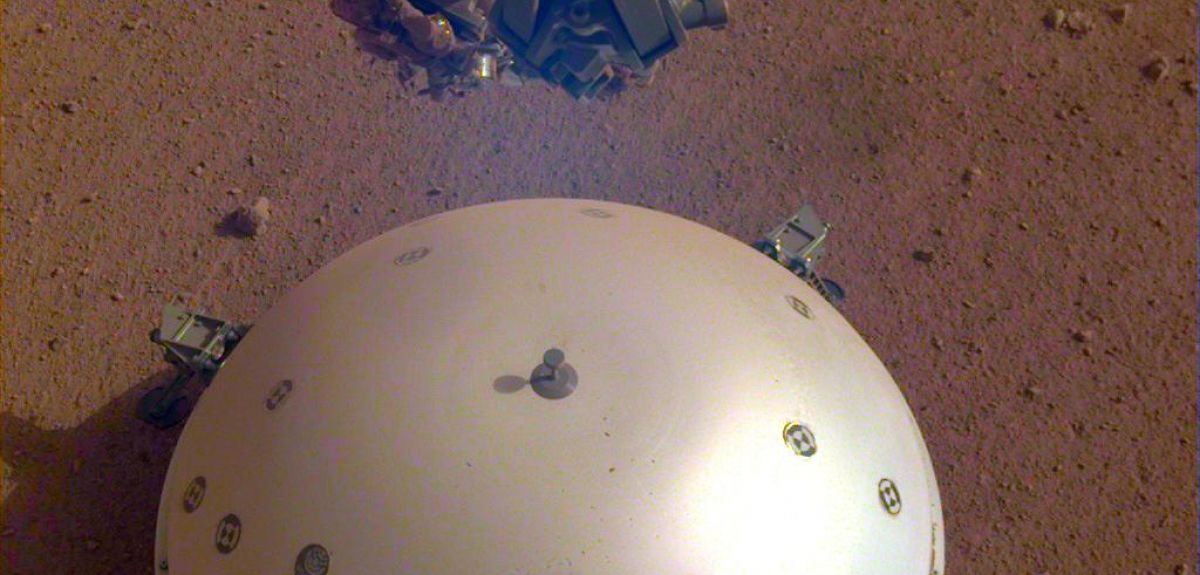
Credit: NASA/JPL-Caltech
First ‘Marsquake’ captured by UK sensors
The NASA InSight lander, which is supported by the UK Space Agency, has recorded its first likely ‘marsquake.’ Seismic vibrations of the Martian surface were detected by a set of silicon sensors developed in the UK, including researchers at the University of Oxford.
The quiet but distinct signal was detected on April 6, 2019 (the 128th Martian day, or sol, of the mission). The signal was detected by InSight’s Seismic Experiment for Interior Structure (SEIS), which the lander placed on the Martian surface on Dec. 19, 2018.
Dr Neil Bowles, from the University of Oxford’s Department of Physics, said: “Seeing the first likely ‘marsquake’ is really exciting and it shows the fantastic performance of the SEIS instrument. We can now start to characterise the types of signals we see on Mars to try and understand how this relates to the structure of planet.”
Science Minister Chris Skidmore said: “Detecting these quakes on a planet 140 million miles from Earth is a spectacular feat of science and engineering -- a testament to the UK’s world leading science and engineering space sector. This project shows what can be achieved through our flourishing international partnerships and signifies our commitment to international space sector creating high skilled jobs across the UK as part of our modern industrial strategy.”
Sue Horne, Head of Space Exploration at the UK Space Agency, said: “Thanks to the Apollo missions of the 1960s we know that moonquakes exist. So, it’s exciting to see the Mars results coming in, now indicating the existence of marsquakes which will lead to a better understanding of what’s below the surface of the red planet.”
SEIS includes three Short Period sensors (SEIS SP) developed in partnership by Imperial College London, Oxford University and STFC RAL Space, with £4 million in funding from the UK Space Agency. These sensors, carved out of silicon, can detect motion at sub-atomic scales.
Prof. Tom Pike of Imperial College London, leading the UK contribution, said: “This is what we what we were all waiting for, the first quivering of the planet picked up by our sensors. We worked hard to develop the most sensitive silicon sensors on Earth to send to Mars as part of SEIS. Up to now we didn’t know if even that was going to be good enough. But it looks like Mars, although very much quieter than Earth, is giving us seismic signals we are able to clearly detect. Our first investigation of the interior of another planet is now under way.”
In December, the British-developed silicon sensors of SEIS captured the first sounds ever recorded directly from Mars -- a haunting, low rumble caused by vibrations from the wind. Recording this wind allows scientists to separate “noise” from actual marsquakes.
InSight, which landed on 26 November 2018, will study the inside of Mars to learn how planets, moons and meteorites with rocky surfaces, including the Earth and its Moon, formed.
 Study reveals how conversational AI can exert influence over political beliefs
Study reveals how conversational AI can exert influence over political beliefs
 Oxford report examines ten reasons to stay in the ECHR as UK public backs membership
Oxford report examines ten reasons to stay in the ECHR as UK public backs membership